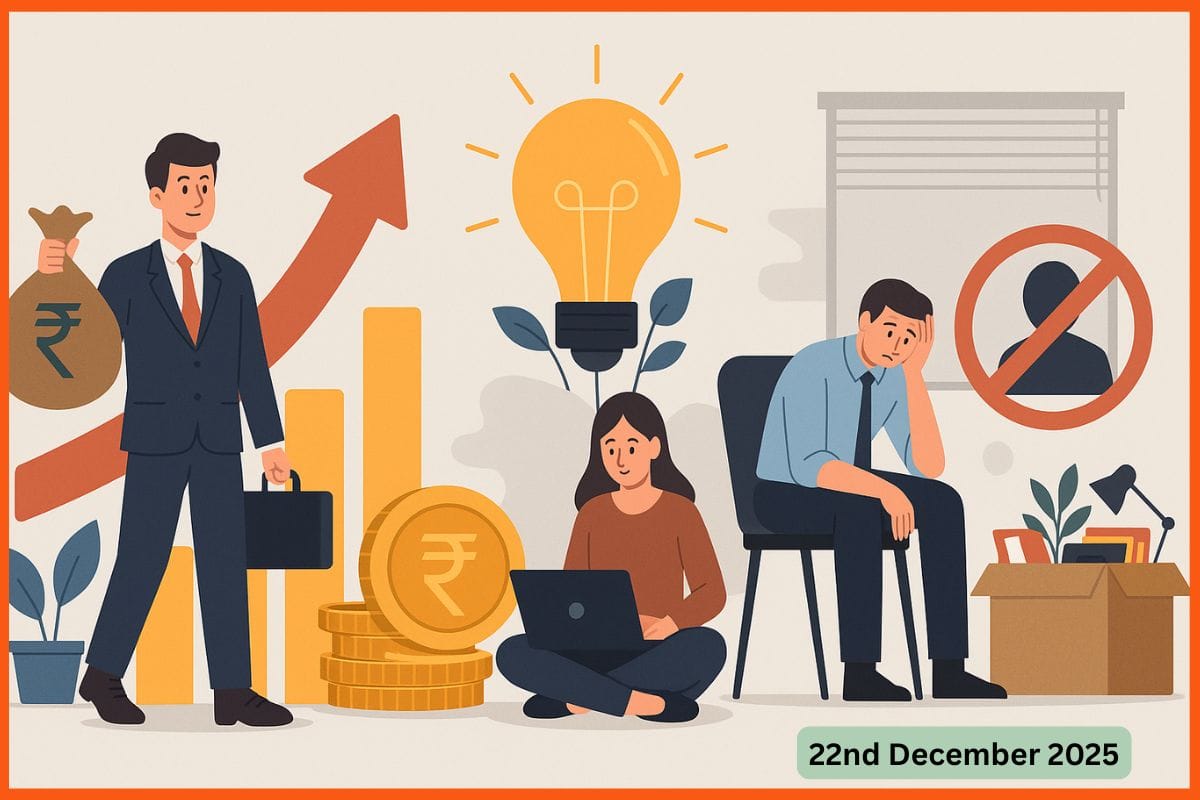AI Has the Potential to Revolutionize the Agricultural Sector: Pankajakshan
📝Interviews
Ten percent of India’s total exports are agricultural products, making it the fourth most exported significant sector for the country. Despite agriculture's importance, India's low output-to-input ratio reveals serious structural flaws that are making life difficult for those who work in the industry. Increased input costs, decreased output, unpredictable weather, dwindling resources, restricted market access, stagnant innovation, and so on are all instances of such difficulties. When it comes to encouraging innovation and entrepreneurship, the agricultural sector is actively looking for methods to use technology to increase crop yields. The agriculture sector of India's economy is feeling the effects of artificial intelligence and other types of disruptive technology. StartupTalky spoke exclusively with Praveen Pankajakshan, Head, of Cropin AI Labs to elaborate further on the subject “AI enhancing country’s agriculture sector”.
How do you envisage the future of AI in the agriculture sector?
Mr. Praveen: The applications of AI in Agriculture can be profoundly transformative, and we have just begun to scratch the surface in exploring the potential of it. Based on some indicators, at Cropin, we started investing resources early on and developed over 50 different models for different customers, which are at different Technology Readiness Levels (TRL). Crop health and phenological stage monitoring, generating cloud-free data, risk mapping for biotic and abiotic stresses, sowing progression and harvest prediction, and irrigation management models that farmers and organizations across the globe are already using. Although we had been working in this space for long, last year, we felt the need to formally launch the Cropin AI Lab in anticipation of its potential for Agriculture.
There is a rapid change in the pace at which the landscape of AI is evolving, and its implications for agriculture are limitless, impacting every stage, from land preparation to cultivation to the consumption process. One of the emerging trends we see is the democratization of AI, and we see many scientifically peer-reviewed methodologies coming into the public domain, even for commercial applications. The world is moving from task-specific models to generic models that can access a wide variety of data modalities. While this will only evolve further, one primary concern that many have (and rightfully so) is the right use of the data and the models. Data privacy, Trust and explainability in AI, ethical use of AI, and lack of data diversity leading to bias are genuine concerns and trending conversations in the market where organizations respond with the right strategies and solutions in their respective industries and domains.
While many are working on AI for Agriculture, the applicability of diverse types of farmers, including small-land-holding farmers (less than 2 hectares) in the Global South, is limited. Most of these solutions are suitable for large farmers who are cultivating mono-crops. While it is important to address the needs of those farmers as well, we cannot neglect the 600 million small-landholding farmers (based on FAO data) who need our assistance in helping them grow food for us in a sustainable and climate-smart way. Currently, there is no lack of data but the available data is noisy or biased, and hence, models that were trained on them carry with them the colors of the data.
Farmers may better grasp data insights such as temperature, precipitation, wind speed, and solar radiation by using artificial intelligence in agriculture. How precise is this data and how it can enhance the output?
Mr. Praveen: The challenge is not in the precision but in the availability of the data. From our own analysis, we have found that the gridded weather data is reasonably accurate compared to weather station data, especially for estimating the temperature and relative humidity. These methodologies use ground station data along with Satellites and Radar data to forecast using a combination of statistical, AI, and numerical techniques. However, reliably forecasting rainfall, even for a few days, is always a challenge and is a fundamentally complex problem to solve as the amount of data available for training these models from weather stations is sparse. As the climate changes, there is an even more need to set up more automatic weather stations or rain gauge stations (ARG). There are many recent initiatives by the Government of India to address this. So, very soon, we will see many stations coming up, densely in the different parts of the country, which can help the models become more accurate.
Looking at this from a farmer’s lens, the existing weather data is very useful for estimating the possibility of a disease or stress onset. Communication of this reliable secondary derived data in a timely manner to the farmers is much more critical. Depending on the monsoon onset, the farmers choose the sowing time and any management practices that can be followed. Due to climate change, we have recently observed delays or early onset of monsoon and false onsets. In many smallholder markets like India, the majority do not have access to this data, at least not on a widespread scale.
Farmers typically base their cultivation processes on traditional wisdom, historical data, and years or decades of experience in the field. In the face of evolving agricultural market dynamics, increasing weather threats, and concerns about pests and diseases, there is also a need to share the data to update their knowledge. However, one must be careful not to overload them with too much information that freezes their decision-making capacity.
Through some of our ground-level surveys, we have found that many farmers have increased yield quantity and quality by a minimum of 25% by adopting some of our solutions. So, the potential and aspiration is to extend this to all the farmers to benefit. The data must be homogenized and brought down to a scale where it is easily ingestable and trustworthy. One key element is to increase the trust of the farmers with whom we work.
Since most of the farmers in India are not tech-savvy and properly educated, how these new technological enhancements can reach them, and how they can be implemented in the best possible ways?
Mr. Praveen: In my interactions with farmers across the globe, they are very curious and ready to learn and implement ideas. The adoption has been limited because there are too many tools, and not all address their essential needs. If trust is established, farmers are keen to adopt some of these technological advancements, not only in India but across smallholder farmer markets worldwide. Tech adoption is actively changing and we are seeing an increase in momentum.
To date, we have digitized about 30 million acres of farmland and impacted the lives of about 7 million farmers globally through some of our solutions. We acknowledge that it is an upward journey to reach out to many more and earn their trust.
Large-scale adoption is challenging but is on the horizon, and all the private and public sector stakeholders are aligning to usher in a major agricultural revolution. Today, farmers grapple with climate change, pest and disease challenges, crop losses, and more. They are actively seeking new ways to transform their cultivation processes, and it's a natural progression in the lifecycle.
For instance, we can predict the potential risk of pest and disease infestation at the plot and the regional level days and sometimes weeks in advance. It allows farmers to address issues proactively, minimizing yield loss. We also provide advisories to farmers based on geo-location, crop, and environmental suitability from sowing to harvest. For Governments and organizations that work with farmers, we provide sowing progression insights, harvest detection, and extreme weather conditions that can affect yield at harvest.
The critical aspect is to make these solutions more accessible and easier for farmers to adopt. They should be affordable and address their daily challenges while raising awareness of how technology can enhance productivity, profitability, and living conditions. Bridging the digital divide in agriculture and addressing financial inclusion at the rural level are also pressing concerns. One player alone cannot tackle the magnitude of issues plaguing the sector and farmers. At Cropin, we understand that it requires the collaboration of all stakeholders, including governments, agribusinesses, NGOs, development agencies, international organizations, financial service providers, and more. In the process, we make our solutions accessible and affordable. They also get the full backing of the entire ecosystem to support them so that farmers feel empowered and, most importantly, supported. We firmly believe we're on the right path, and you can expect transformations very soon.
Indian Government, during 2020-21 and 2021-22, has allocated funds to the tune of INR 1756.3 cores and INR 2422.7 crores to the States for introducing new technologies including drones, artificial intelligence, blockchain, remote sensing, GIS, etc in agriculture. Can this be considered as a major boost and is it reaping the right fruit for the sector?
Mr. Praveen: While we cannot provide a commentary on government policies, it is worth noting that the government is undeniably moving in the right direction. These progressive policies and roadmaps have the potential to not only uplift our agriculture sector but also set an example for other countries to follow. What's crucial now is to focus on the most effective way to implement these progressive policies, ensuring they translate into action on the ground seamlessly.
Since India is a country where dialects change with every mile, how the service providers are coping with this challenge?
Mr. Praveen: This doesn't currently pose a significant challenge because there have been recent advancements in text-to-speech algorithms that are specifically trained for the Indian languages and context. But, the critical element is customizing the solutions to the localized needs. With such crop diversity and growing conditions, this is one of the most critical challenges to address. Our platform is made available to the preferred language of choice for the farmers, and we customized/scaled these solutions to many countries. Additionally, we have established an ecosystem of customers, partners, and field agents who understand the specific requirements of farmers in every nook and corner, which is an invaluable support to farmers and those working for them.

Must have tools for startups - Recommended by StartupTalky
- Convert Visitors into Leads- SeizeLead
- Website Builder SquareSpace
- Manage your business Smoothly Google Business Suite







